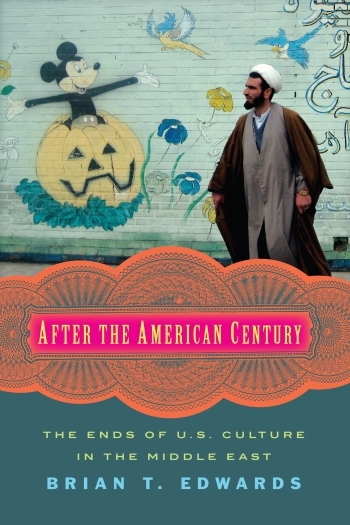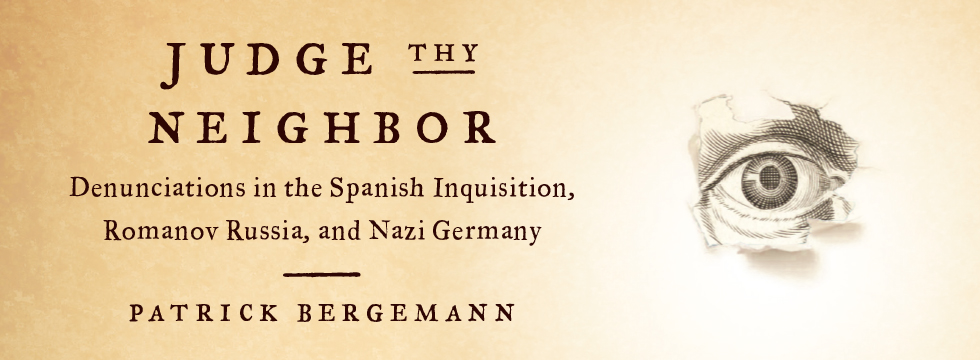The Resurgence of American Orientalism — Brian T. Edwards

“The persistence of Orientalist patterns of representing the Middle East and North Africa is visible in a staggering quantity of representations of the region in contemporary U.S. literature, television serials, comedy, and consumer culture … American Orientalism has been not only renewed but also extended and exaggerated.”—Brian T. Edwards
In After the American Century: The Ends of U.S. Culture in the Middle East, Brian Edwards considers what happens to American culture as it circulates in the Middle East. In the book’s epilogue, “Embracing Orientalism in the Homeland,” Edwards discusses the ways in which Middle Eastern and North African culture is received in the United States, and how they reflect a renewal of Orientalism.:
So what does make it back to the United States? What works do U.S. publishers and distributors circulate? The sad truth is that when creative works by authors from the Middle East and North Africa have reached larger audiences in the United States during the first decade and a half of the twenty-first century, they have tended to confirm prevailing and debilitating stereotypes about the region. As noted in earlier chapters, Ali Behdad and Juliet Williams identify a recent phenomenon they call “neo-Orientalism”: texts about the Middle East published in English by writers with origins in the region whose “self-proclaimed authenticity sanctions and authorizes their discourse.” In their important essay, Behdad and Williams focus on the high number of memoirs by Iranian women published in English in the first decade of the twenty-first century, such as the best-selling Reading Lolita in Tehran (2003) by Azar Nafisi and Journey from the Land of No: A Girlhood Caught in Revolutionary Iran (2004) by Roya Hakakian. Such works are explicitly political in their intent and either explicitly or implicitly justify U.S. intervention in the region through what Behdad and Williams call their “ahistorical historicism.” Namely, these authors purport to teach American readers the history of some aspect of the region that has gone wrong while at the same time making historical errors or misleading statements—say, Nafisi’s inaccurate history of veiling in Iran before the revolution—and suggest that outside assistance is required to set Iran back on its correct course.
For Behdad and Williams, Marjane Satrapi’s wonderful graphic novel Persepolis—written and first published in Paris in 2000—was the exception that proved the rule in large part (in their analysis) because of the ways in which Satrapi refused a New York Times reporter’s attempt to essentialize her as a Muslim invested in “denounc[ing] Islamic fanaticism.” (In her interview with Deborah Solomon in the New York Times Magazine, Satrapi turned Solomon’s questions on themselves. Solomon disagreed with Satrapi when the latter claimed that Iranian veiling and Western unveiling of women are “equally reductive” of women. Satrapi then called out the Western hypocrisy around body image and plastic surgery: “If in Muslim countries they try to cover the woman, in America they try to make them look like a piece of meat.”) One might go further and note that within her comics themselves, Satrapi is able efficiently to critique both Iranian contradictions in the obsession with the dangers of American culture and the shallow ways in which the West regards Iran. Her simple, even naive style of drawing allows her, via her autobiographical character Marji, to reveal the paradoxes inherent in both Iran’s and the West’s regard of each other.
Nonetheless, the ways in which Persepolis was read in the United States and adopted in schools tended to focus more on the perfidious nature of Iran than on Satrapi’s critique of the limitations of the West. As Satrapi commented on the U.S. publication of the second volume of Persepolis in 2004 (the original French edition appeared in four volumes, whereas the American edition was divided into two, appearing in 2003 and 2004, respectively), in the first book she had “the benefit of being cute, and not really responsible for the world around me. In the second book, I’m absolutely not cute anymore.” For schools, the first volume offered a user-friendly approach to teaching the Iranian Revolution, and the younger Marji in Persepolis: The Story of a Childhood offered a more charismatic hero than the older Marji in Persepolis 2: The Story of a Return, which begins when a fifteenyear-old Marji emigrates from Iran to Vienna. In 2013, the Chicago Public School system pulled its copies of the graphic novel from school libraries and restricted access for students in grade 11 and lower.8 Barbara Byrd-Bennett, the CEO of Chicago Public Schools, named the book’s “graphic language and images” as the reason; by “graphic,” Byrd-Bennett was not referring to the fact that the book was a graphic novel, of course, but rather to the frames that rendered scenes of torture, apparently too vividly. The paradox was apparent. As the manager of Chicago’s feminist bookstore Women & Children First commented, it was “ ‘shocking and ironic’ that a book about freedom and freedom of expression would itself be restricted by [Chicago Public Schools].” Satrapi herself responded: “[T]his whole story in Chicago was absolutely shocking to me. They’re saying it’s inappropriate for kids because of the scenes of torture that were in just a couple of frames—in a book that is 200 pages long! It’s as if children never killed anybody in their video games, or as if they had never seen any fi lms that contain violence. As you know, in America, kids can watch violent movies, and it’s not a problem, but if you say the word ‘fuck,’ that is unacceptable. Children are exposed to violence. But if it’s the violence of guns on TV, that is accepted.”
Despite their differences, what authors such as Satrapi, Nafisi, and Hakakian have in common is that they are, as Behdad and Williams put it, “Middle Eastern women and men who use their native subjectivity and newfound agency in the West to render otherwise biased accounts of the region . . . more authoritative and objective.” Nafisi and Hakakian play on this assigned authority or representativeness, and Satrapi finds it difficult to escape. Either way, the alchemy happens in the U.S. marketplace, whether in the worlds of publishing or in the mediascape populated by talking heads, both of which desire “native informants.” Now, I would be the last critic to argue that people with origins or heritage in the Middle East region should not comment on that region for viewers and readers in the United States, but the point is that biases are of course carried over with the experience of exile or diaspora (quite notably in the case of Iran) and that these biases are often effaced via the logic that the native informant is necessarily unbiased and objective because of his or her heritage. Neo-Orientalism therefore may have continuities with the past, but, as Behdad and Williams argue, it also is a “supplement to enduring modes of Orientalist representation.” Such memoirs proliferate in what seems to have become an entire genre—the memoir by the previously unknown fi gure, who serves as native informant to a little-known part of the world. Th is proliferation of memoirs in turn limits other Iranians’ or Egyptians’ or Moroccans’ ability to publish in different genres in the United States. Th e market expects new titles to follow in the preestablished niche.
The Iranian memoir is only a part of the terrain in the new fascination with the Middle East. In the wake of the Tahrir uprisings, for example, as I discussed in chapter 2, the work of Alaa Al Aswany stood in for a much more complicated group of writers working in Cairo. For many, Al Aswany’s melodramatic novel The Yacoubian Building confirmed the Orientalist perspective on Egypt that was being revised in Cairo by writers of the next generation. Based on the ways that Al Aswany’s novel was translated and circulated in the United States in 2011 and after, therefore, he can be grouped with those whom Behdad and Williams call the neo-Orientalists. Within neo-Orientalism, as I am describing it, both the author and the U.S. marketplace (publishing world plus media outlets) work together, creating and sustaining the writer’s authority to represent his or her region—to be its representative. The author writes and speaks; the U.S. marketplace publishes and publicizes and effectively filters out competing voices that might challenge the perspective of the chosen representative.
Neo-Orientalism does not replace Orientalism, however; it supplements it. Beyond the popular Iranian memoirists and those representative Arab “native informants” propelled by the U.S. marketplace, can we claim that classic Orientalism endures in the twenty-first century? If so, does Orientalism operate differently in the digital age?
The persistence of Orientalist patterns of representing the Middle East and North Africa is visible in a staggering quantity of representations of the region in contemporary U.S. literature, television serials, comedy, and consumer culture—works that cross the highbrow–lowbrow divide. That which Edward Said predicted twenty years ago, alas, remains true, but with a twist. Since September 2001, the United States has been in a perpetual state of war or troop deployment to sustain the military occupation of two nation-states in the Middle East; we have been in an extended version of that Saidian “spurt” of attention. American Orientalism has been not only renewed but also extended and exaggerated.





1 Response